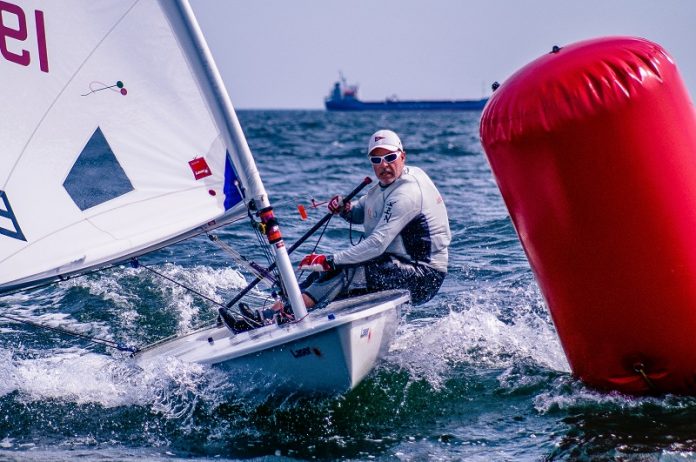

Photo by Ludomil Sawicki
Have a leeward mark checklist. Although this rounding is like others there is more potential for gain or loss.
If you don’t approach the mark correctly, you can easily end up on the outside of a gaggle of boats. If you don’t exit from the mark in good shape, it will be hard to do well on the next beat.
At the mark, use a mental checklist to help you get the most out of each rounding. Things to think about include:
-
Plan your next leg strategy –
As you approach to the leeward mark, think about what the wind will do on the next beat. Which side will be favored, which side will have more pressure? This will have a significant impact on your mark-rounding strategy and at a leeward gate will determine which mark you will round.
-
Check for any course change –
The race committee will use the leeward mark to notify of any course change. Take note of the new compass bearing to the weather mark plus there may also be a + or – symbol which indicates whether the leg has been shortened or lengthened.
-
Check for current –
When you are at a fixed mark, its a perfect time to check current set and drift. This is information that you can incorporate into your next leg strategy.
-
Check your compass heading –
As soon as you are heading upwind, note the compass heading and note whether you are lifted or headed. you need to know how many degrees you are different to the previous heading on that tack. This information will help you to decide, coupled with the information collected downwind, whether its a persistent or oscillating shift.
Spinnaker Takedown –
Think ahead prior to dropping the spinnaker. Do you need to set it again, if so what side do you need it set? Where possible take it down on the side that you will be setting it from again.
Drop the kite earlier than you think. The most common snafu I see at the leeward mark is boats rounding with the spinnaker still part up and the crew rushing around finishing the drop.
This unsettles the boat and ensures those rounding close behind can head up inside and past you.
Leave the tidy up –
After you pass the leeward mark, get all of the team to their upwind positions and get the boat sailing fast in the groove. Once you are settled down then get the lightest crewmember to get off the side to complete the tidy up.
This should only be commenced when battles with fellow competitors are over and any bad sets of waves are conquered.
Clear to tack –
Whilst the helmsperson is concentrating on keeping the VMG at its best, have one of the crewmembers keeping an eye on the boats around you.
Even if you want to carry on for tactical reasons, have that observer call out “clear to tack” so the tactician or helm knows that if something changes they can throw the helm down.
Obviously this would only happen after warning the team that they are going to tack.
Cutting it too fine at the rounding – Leeward Mark Checklist
The risk of hitting a mark is not worth the small amount you gain by cutting it close. So don’t make your rounding too tight. However, you can usually sail closer at a leeward mark because:
- You don’t have to worry about the anchor line;
2.Your boom, sheets and halyards are on the side of your boat that’s away from the mark;
3. Your wind shadow won’t suck the mark into your boat.
Smaller boats turn easily so you can get closer. Be careful when the mark is bouncing around in waves, and don’t hike out suddenly right as you pass the mark for fear of it brushing a crew member and resulting in a penalty.

